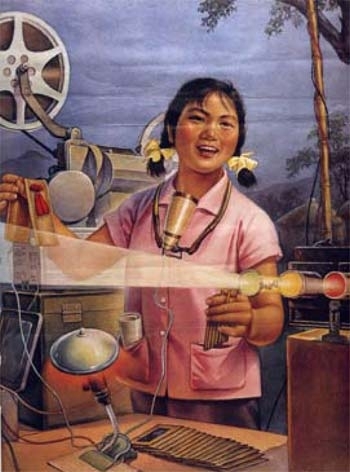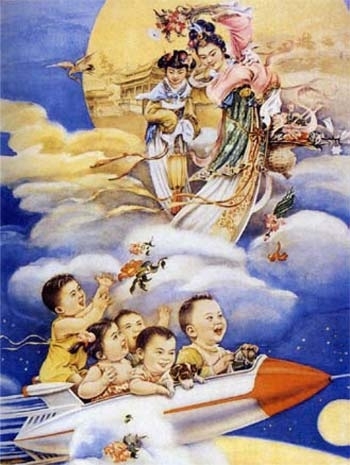China Modern: Designing Popular Culture 1910–1970
–

Rural Portable Theater, 1966, Poster, Courtesy of Reed Darmon
China faced radical changes in the 20th century. Its monarchy political system was replaced by The Republic of China in 1912 and The People’s Republic of China in 1949. When China opened its ports and took on new trading partners, the influence of the West took root. The country’s feudal society was soon replaced with new thoughts, ideas, technology, and artistic expressions.
By the beginning of the 20th century, Shanghai was China’s commercial center. Both Chinese and Western companies looked for new ways to lure customers with product promotion. When Western lithograph printing came to China, advertising art flourished. Handbills, posters, calendars, trade cards, product wrappers and packaging with Chinese themes were widely used to promote not just products but emerging political ideology as well.
China Modern is a vast and substantive exhibition of approximately 175 objects which takes an in-depth look at the rich tradition of Chinese designs and styles in advertising, packaging, and promotional art for cinema, music, comic books, pulp fiction, fashion, games and toys. The exhibition’s iconic images chronicle China’s changing attitudes, identity, and its transition to a giant, commercial superpower. Initiated and launched by the Pacific Asia Museum, Pasadena, California, the exhibition is based on curator Reed Darmon’s research for the book, Made in China, published by Chronicle Books.

Travelling Through Space, Xin Hwa Printing, HeBei, 1979, Poster, Courtesy of Reed Darmon
Ellen Johnston Laing, the author of Selling Happiness, cited that as many as 700,000 posters and calendars were printed during the first three decades of 20th century. Most of these were produced in Shanghai, one of eight ports that were opened to Westerners in mid 19th centuries.
The exhibition is organized into theme-related categories and commodities. In Cosmopolitan Capitalism of Shanghai Under the Republic, the iconic images of the Modern Girl and the Modern Boy are revealed in advertising and clothing items, cosmetics packaging, lichee boxes, tea packages, tobacco, matchboxes, cigarette packs, tobacco cards, and smoking accessories. In Revolution in Culture, Designing the People’s Republic, the bright future is shown in propaganda posters of Chairman Mao and soldiers with the message, “We are determined to liberate Taiwan.” Mao Tse Tung is also shown as an icon on tea sets, pins, and busts during this period. Comprising the theme of Building the Workers Paradise we see products, figurines and posters depicting happy industrious workers.
China Modern brings a new understanding of China’s political and commercial transition to the modern era. U.S. audiences will find new appreciation for China and it’s richly evolving cultural fabric.
Interested in bringing a group to see China Modern? Click here to schedule a self-guided tour of the exhibit.
